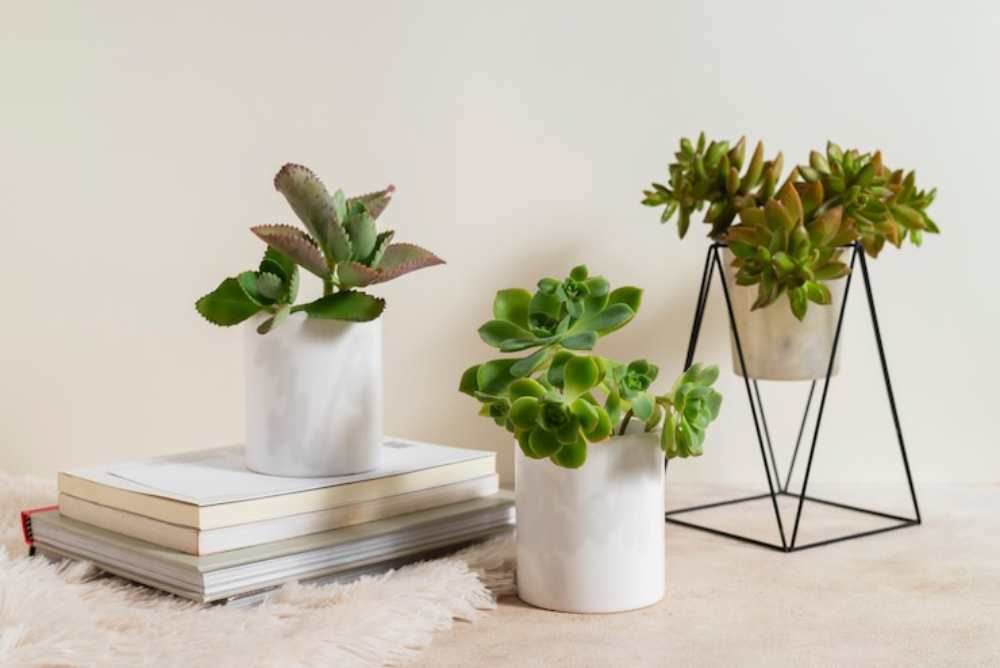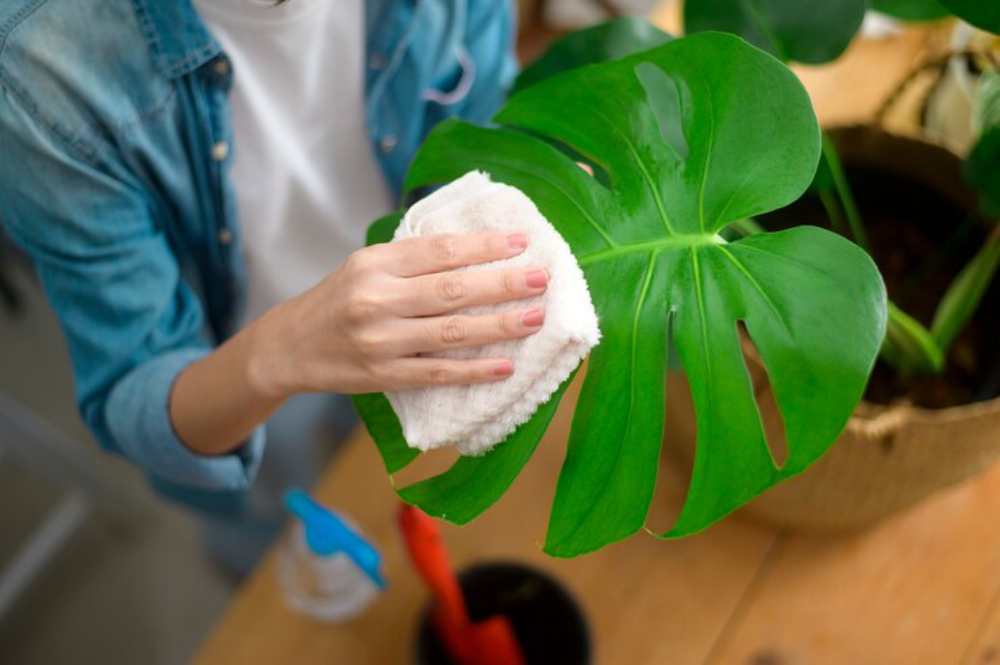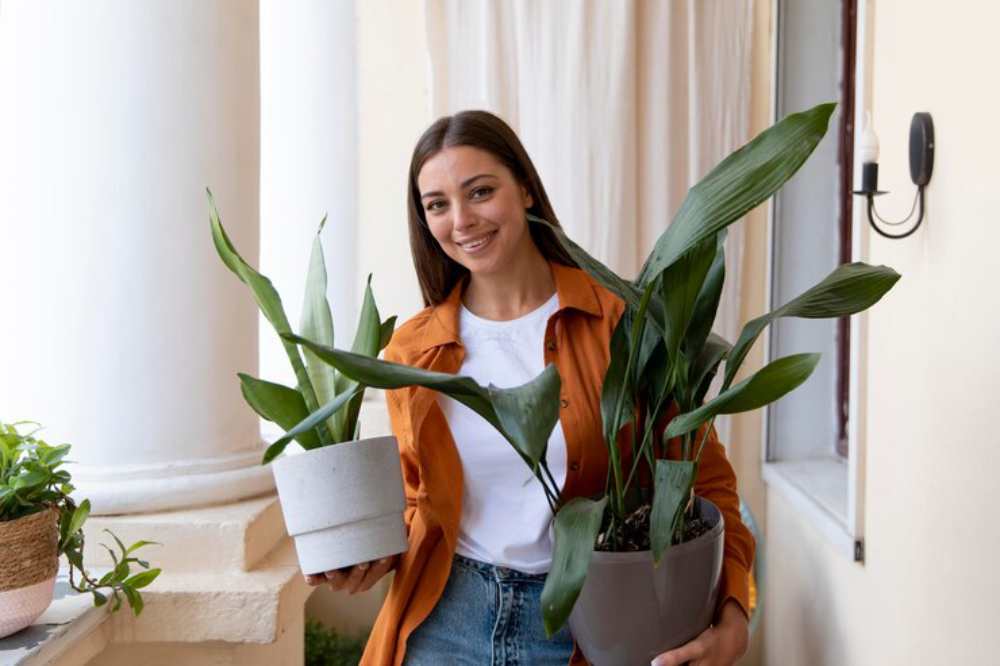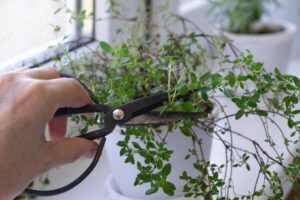The Interior Blog

Plant Placement According to Feng Shui Principles
You may not always notice it, but every object in your home — every book, every piece of furniture, and yes, every plant — contributes to the energy around you. When things are placed with intention, rooms feel calm and spacious. When they’re not, even beautiful décor can feel “off.”
This is where Feng Shui offers a path forward. Rooted in thousands of years of Taoist philosophy, Feng Shui is the ancient Chinese art of arranging your environment to enhance harmony, flow, and prosperity. And plants? They’re one of the most powerful — and accessible — tools in this practice.
Whether you’re already a dedicated plant parent or just looking to create a more mindful home, this guide will walk you through feng shui decor tips, including how to use the plant placement guide to align your home with positive, nourishing energy.
You’ll learn which plants work best for different areas, how to read the Bagua map, and how to correct imbalances with greenery — without turning your house into a jungle.
Why plants matter in Feng Shui
In Feng Shui, plants are associated with the wood element, which symbolises growth, vitality, and renewal.
They can:
- Boost stagnant chi (life force energy)
- Absorb negative vibes or sharp energy
- Introduce upward movement, encouraging personal and financial growth
- Bring colour and softness to hard or angular spaces
- Help restore energetic balance in over-cluttered or emotionally ‘cold’ areas
Simply put, plants are living energy. Their placement influences not just how a room looks, but how it feels.
Choosing the right plants for Feng Shui

Not all plants are created equal in Feng Shui. Here are some characteristics to consider:
Ideal plant traits:
- Soft, rounded leaves (symbolise wealth and harmony)
- Upward-growing habits (promote expansion and progress)
- Air-purifying abilities (clear stagnant or negative energy)
- Healthy and well-cared for (represents thriving energy)
Plants to approach with care:
- Spiky or sharp-leafed plants (can produce ‘sha chi’ or harsh energy — especially in bedrooms)
- Dried or artificial plants (they carry no life force and may block chi)
- Dying or dusty plants (represent stuck or declining energy)
When styled intentionally, even plants with bolder shapes like snake plants can be used — it’s all about balance and placement.
Explore related styling tips in this blog on Best Indoor Plants for the Entryway & Hallway Styling
Where to place plants for maximum harmony
Let’s explore how to use plants to activate each Bagua zone in your home or room.
1. Southeast – Wealth and Prosperity
Ideal plants:
- Money tree (Pachira aquatica)
- Jade plant (Crassula ovata)
- Rubber plant (Ficus elastica)
Place a vibrant, upward-growing plant in this corner to symbolise expanding wealth. Choose a gold or green pot for extra symbolism.
2. South – Fame and Reputation
Ideal plants:
- Anthurium
- Red flowering bromeliads
- Snake plant (for strong energy)
Use red pots or accessories here. Keep the area bright — symbolising fire — and place your boldest, most dramatic plant here.
3. Southwest – Love and Relationships
Ideal plants:
- Peace lily
- Orchids
- Peperomia
Styling tip: Use pairs of plants to symbolise partnership. Avoid plants with sharp or pointed leaves. Add romantic accents like pink pots or rose quartz stones.
4. East – Family and Health
Ideal plants:
- Bamboo palm
- Areca palm
- Boston fern
Styling tip: Use soft, full-leafed greenery to symbolise nurturing family ties. Wood and earth tones work beautifully in this zone.
5. Centre – General Health and Balance
Ideal plants:
- Peace lily
- Aloe vera
- Calathea
Styling tip: Avoid clutter in the centre of your home. Place one healthy, upright plant in a neutral pot. Think simplicity and balance.
6. West – Creativity and Children
Ideal plants:
- Spider plant
- Pilea (“friendship plant”)
- Succulent bowls
Styling tip: This zone benefits from playful or rounded plants. Add joyful elements like colourful pots or playful shapes.
7. Northeast – Knowledge and Wisdom
Ideal plants:
- ZZ plant
- Snake plant
- Bonsai
Styling tip: Use grounding, minimal plants near your reading corner or meditation area. Add books or journals for a layered effect.
8. North – Career and Life Path
Ideal plants:
- Lucky bamboo
- Philodendron
- Pothos
Styling tip: Trailing or flowing plants are perfect here. Choose black, blue, or metallic planters to activate water energy.
9. Northwest – Helpful People and Travel
Ideal plants:
- Jade plant
- Air plants
- Peace lily
Styling tip: Silver or white pots enhance the metal element here. A small, healthy plant by your entrance can draw in new connections and support.
Practical feng shui decor tips for plant styling
Don’t overdo it
Too many plants, even lucky ones, can overwhelm a space. Think of each plant as a punctuation mark — not every corner needs one.
Think balance
If one side of a room feels “heavier” in energy (or décor), balance it out with a matching plant or paired styling.
Keep them clean and fresh

Dust blocks light and energy flow. Gently wipe leaves weekly, and prune dead leaves immediately.
Let them breathe
Avoid pushing plants into tight corners or cramming shelves. Air circulation matters — both for energy and for plant health.
Match materials mindfully
Plant materials influence the five elements.
For example:
- Wood: supports growth and creativity
- Metal: adds focus and helpfulness
- Earth: provides stability and grounding
- Water: fosters flow and adaptability
- Fire: encourages passion and confidence
Mix these mindfully depending on the zone you’re styling.
Learn more about how to use vertical displays in this guide to How to Build a Budget Indoor Plant Wall
Mistakes to avoid with feng shui plant placement
Even with good intentions, it’s easy to misplace your plants and disrupt the flow.
Here’s what to watch for:
- Dead or dying plants: They block good chi — either revive or remove them
- Placing spiky plants in bedrooms: These create active, not restful, energy
- Neglecting symmetry: Especially in relationship zones, unbalanced displays can signal imbalance
- Putting plants in the centre of clutter: Clean, open space allows chi to move freely
- Overloading zones: Less is often more when it comes to feng shui
Conclusion: Let your plants tell a positive story

When placed with purpose, your houseplants become more than décor — they become allies in shaping a harmonious life. Feng Shui isn’t about superstition. It’s about intention. And in today’s fast-paced world, the simple act of pausing to care for a plant, choose a pot, or clear a shelf can have powerful ripple effects.
By aligning your indoor greenery with the principles of Feng Shui, you create a home that feels good to be in — a space where energy flows freely, opportunities blossom, and you feel anchored and alive.
Ready to shift your home’s energy? Start by choosing one plant, one placement, and one intention. You don’t need to do it all — just begin. Harmony grows from there.









